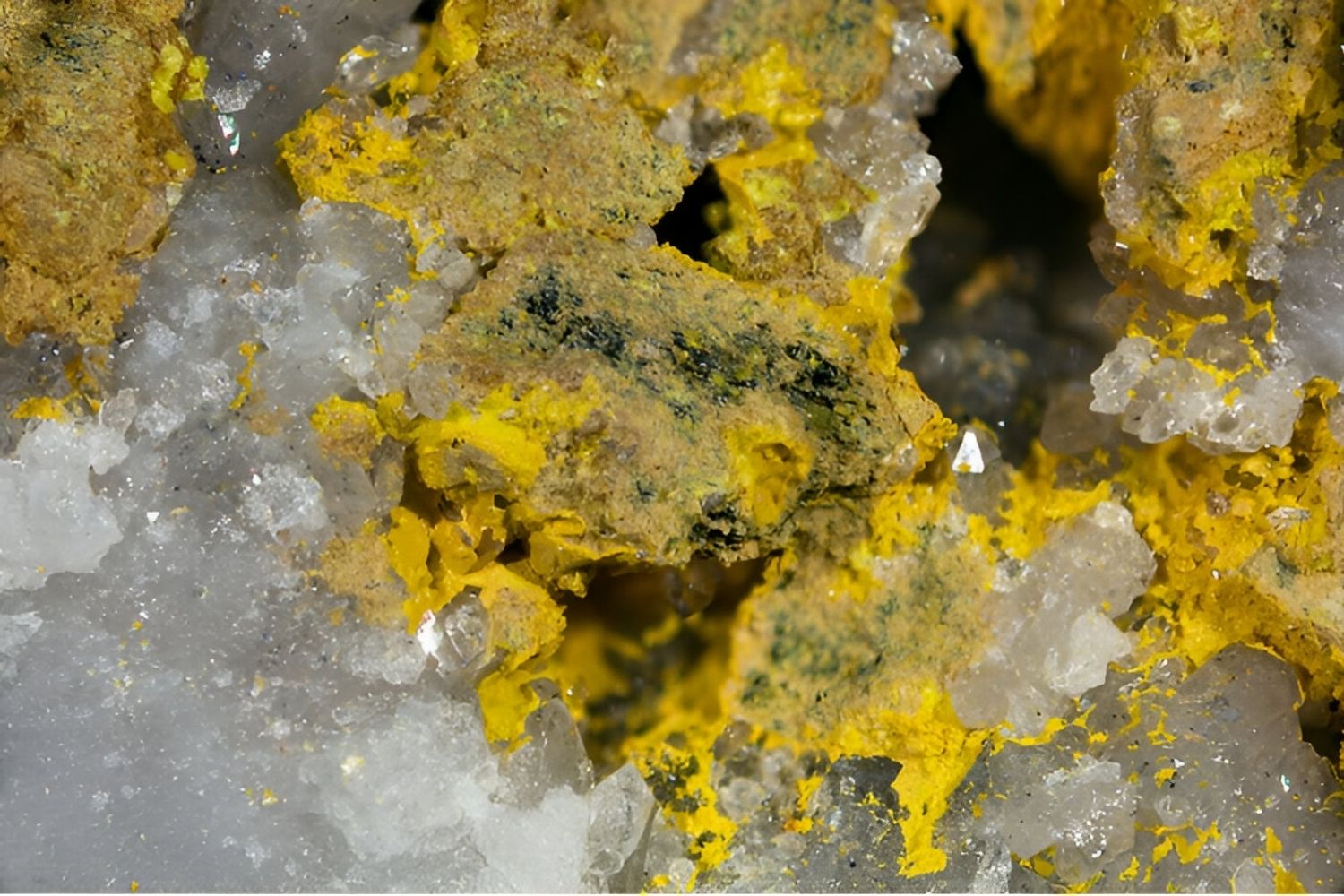
Tungstite is a rare mineral that often piques curiosity due to its unique properties and fascinating formation process. Found primarily in hydrothermal veins, this mineral is a secondary tungsten oxide mineral, typically forming as a result of the alteration of primary tungsten minerals like scheelite and wolframite. Tungstite is known for its bright yellow to greenish-yellow color, making it easily recognizable. Its chemical formula, WO3·H2O, indicates that it contains both tungsten and water molecules. This mineral is not only interesting to geologists but also to collectors who appreciate its vibrant hue and crystal structure. Whether you're a student, a hobbyist, or just someone with a keen interest in minerals, learning about Tungstite can be both educational and enjoyable.
Key Takeaways:
- Tungstite, a rare mineral rich in tungsten oxide, has unique properties and is found in specific geological settings. It has potential uses in environmental science and technological applications, making it valuable for various industries.
- Tungstite's primary component, tungsten, is crucial in the production of hard metals, electrical contacts, aerospace industry, radiation shielding, military applications, and medical devices. Its unique properties make it valuable in scientific research fields.
What is Tungstite?
Tungstite is a rare mineral composed mainly of tungsten oxide. It forms under specific conditions and has unique properties that make it fascinating to scientists and collectors alike. Let's dive into some intriguing facts about this mineral.
-
Tungstite is primarily composed of tungsten trioxide (WO3).
-
It typically forms as a secondary mineral in the oxidation zones of tungsten-bearing hydrothermal deposits.
-
The mineral often appears in yellow to yellow-green colors, making it visually striking.
-
Tungstite has a monoclinic crystal system, meaning its crystal structure is asymmetrical.
-
It is relatively soft, with a Mohs hardness of 2.5 to 3.
-
The mineral has a specific gravity of 5.5 to 7.5, indicating it is quite dense.
-
Tungstite is often found in association with other minerals like scheelite, wolframite, and quartz.
-
It was first described in 1868 by the German mineralogist August Breithaupt.
-
The name "tungstite" is derived from the Swedish words "tung sten," meaning "heavy stone."
-
Tungstite can form as a result of the weathering of tungsten-bearing minerals.
Where is Tungstite Found?
Tungstite is not commonly found everywhere. Its occurrence is limited to specific geological settings. Here are some notable locations where tungstite has been discovered.
-
Germany is one of the first places where tungstite was identified.
-
Significant deposits have been found in the United States, particularly in California and Nevada.
-
Australia also has notable occurrences of tungstite, especially in New South Wales.
-
The mineral has been found in China, a country known for its rich mineral resources.
-
Russia has reported occurrences of tungstite in its vast mineral-rich regions.
-
Bolivia is another country where tungstite has been discovered.
-
Canada has also reported findings of this rare mineral.
-
Japan has some known deposits of tungstite, particularly in its hydrothermal regions.
-
South Africa has reported occurrences of tungstite in its mineral-rich zones.
-
Mexico is another country where tungstite has been found.
Uses and Applications of Tungstite
While tungstite itself is not widely used in industrial applications, its primary component, tungsten, is highly valuable. Here are some interesting facts about its uses.
-
Tungstite is studied for its potential in photocatalytic applications due to its unique properties.
-
The mineral is of interest in environmental science for its ability to degrade organic pollutants.
-
Tungstite can be used in the synthesis of nanomaterials for various technological applications.
-
Tungsten, derived from tungstite, is crucial in the production of hard metals like tungsten carbide.
-
Tungsten is used in electrical contacts and filaments due to its high melting point.
-
The metal is also essential in the aerospace industry for its strength and resistance to high temperatures.
-
Tungsten alloys are used in radiation shielding because of their density.
-
Tungsten is used in military applications, including armor-piercing ammunition.
-
The metal is also used in medical devices, particularly in radiation therapy equipment.
-
Tungsten's unique properties make it valuable in various scientific research fields.
The Final Word on Tungstite
Tungstite, a fascinating mineral, holds a unique place in the world of geology. Its bright yellow color and rarity make it a prized find for collectors. Formed through the oxidation of tungsten-bearing minerals, tungstite often appears in hydrothermal veins. Its chemical composition, WO3·H2O, reveals its close relationship with tungsten.
This mineral's significance extends beyond its beauty. Tungstite serves as an indicator of tungsten deposits, aiding in mining efforts. Its presence can signal valuable resources hidden below the surface. Additionally, tungstite's properties have potential applications in various industries, including electronics and materials science.
Understanding tungstite enriches our knowledge of Earth's geological processes. It reminds us of the intricate connections between minerals and the environment. Whether you're a seasoned geologist or a curious enthusiast, tungstite offers a glimpse into the wonders of our planet. Keep exploring, and who knows what other hidden gems you'll uncover!
Frequently Asked Questions
Was this page helpful?
Our commitment to delivering trustworthy and engaging content is at the heart of what we do. Each fact on our site is contributed by real users like you, bringing a wealth of diverse insights and information. To ensure the highest standards of accuracy and reliability, our dedicated editors meticulously review each submission. This process guarantees that the facts we share are not only fascinating but also credible. Trust in our commitment to quality and authenticity as you explore and learn with us.
